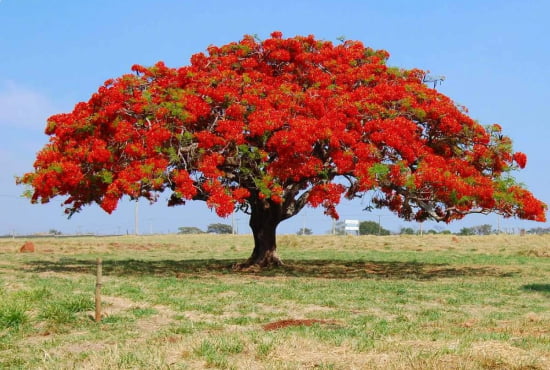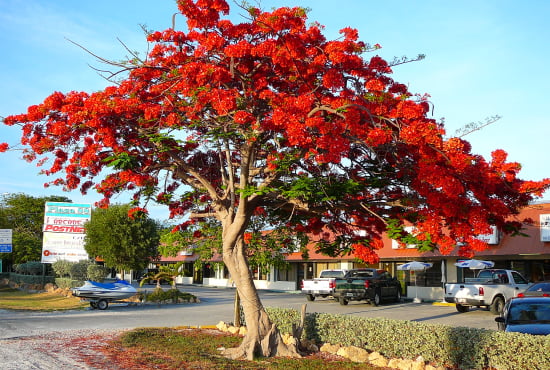Introduction Of Gulmohar
A Gulmohar tree is also known as a Royal Poinciana or Flame of The Forest. This popular tropical shrub is native to Madagascar but can be found in many different parts of India and other Asian countries. Gulmohar gets its name from two words gul which means flower and mohar which translates to gold because its flowers are yellow-orange in color.
Many people aren’t aware of the fact that Gulmohar trees are an important part of their local ecosystem, and that they have amazing uses outside of just being pretty to look at. Many people think of them as purely ornamental, but these trees have many different uses beyond their stunning flowers and fruit. Here’s everything you need to know about Gulmohar trees, including the best ways to use them in your garden.

What Are The Benefits Of The Gulmohar Tree?
This plant has incredible medicinal properties and so many uses it is incredible. It was even used in ancient Egypt as a treatment for headaches and fevers.
It was also used to create a red dye that was used by women on their hair, lips, and nails. It is easy to see why they called it flame of the forest when you look at its beautiful orange/red flowers. This vibrant flower symbolizes life and renewal which is why people often use it to celebrate weddings. You can decorate your wedding with these gulmohar flowers or even make them into jewelry for bridesmaids! Many different cultures use these flowers in celebrations such as Eid ul-Fitr and Holi.
Plant Description
Grows to a height of 10-20 meters. Widely planted gulmohar tree in India and Pakistan as an ornamental tree and is also used for bonsai. Flowers are usually red but can be white or pink too. Its flowers bloom throughout most of the winter making it a popular ornamental plant in cold countries where it is grown as an indoor plant. It prefers sunny locations and moist soil with good drainage.

Growing Tips
It’s important to choose a location that has both plenty of light and plenty of room for your Royal Poinciana tree to grow to its potential height. A good rule of thumb is at least 6 hours of direct sunlight every day. This will allow for maximum growth. You should also give it plenty of space. If you plan on planting your tree outdoors, it needs an area where it can spread out for about 30 feet or more without being blocked by other trees or structures.
If you plant your tree in well-drained soil and keep it on a regular watering schedule, it should be fine. As with most plants used for ornamental purposes, ficus trees do best when given a dose of fertilizer every few months. Of course, fertilizing too much can burn or damage roots so use caution when giving your tree a boost of nutrients.
It’s also important to make sure that your tree receives adequate amounts of water at all times so while an occasional drought may not kill it entirely, it will hurt its overall health and appearance over time. There are a few ways to tell if you need to give your plant some water: If its leaves begin to droop or curl up then chances are they’re thirsty.

Things To Avoid When Growing a Royal Poinciana Tree
Some things you should know if you plan to grow a Royal Poinciana Tree. Below are some of those things:
- Don’t plant your tree near a street or sidewalk. The fumes from passing vehicles will stunt its growth.
- Don’t overwater it because it is susceptible to root rot and mildew when grown in soggy soil.
- Keep your tree well pruned to ensure strong growth and an attractive appearance.

